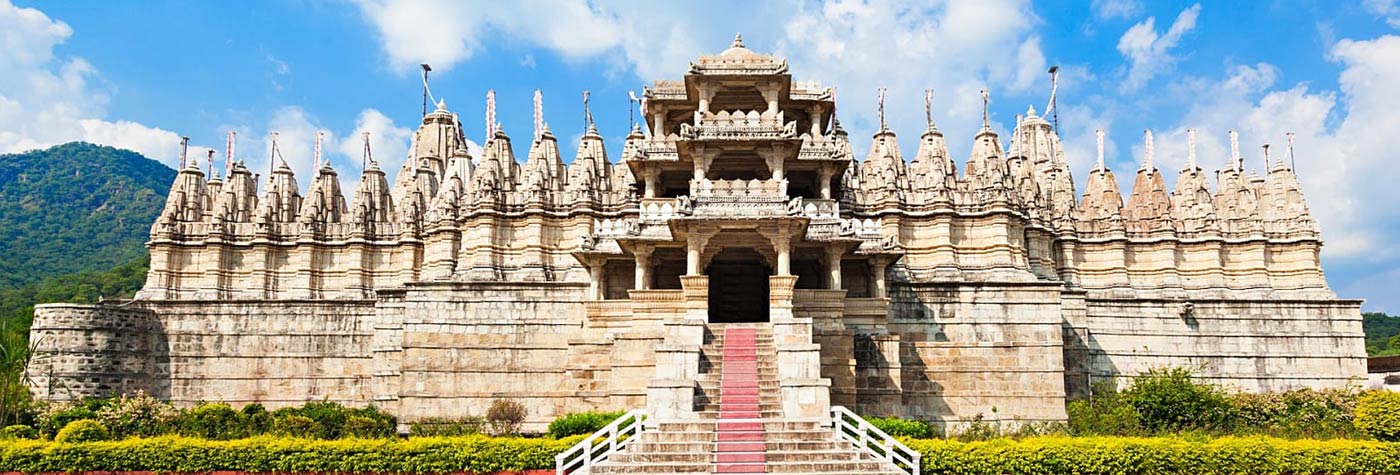Best Places to Visit Ranakpur
Best Places to Visit Ranakpur is the most preferred family holiday site located in western part of Rajasthan. Being one of the most famous pilgrimage sites, there are quite a few interesting places to visit in Ranakpur. Ranakpur is known for one of the most stunning Jain temples dating back to the 15th century AD. The place sees a lot of tourist footfall during the months of October, November, and December. Though these are the preferred months, one can visit summer, monsoon, winter – anytime. The local attractions of this place are not too far from one another. They can easily be covered in two or three days. In this article we have discussed some of the biggest tourist attractions in Ranakpur which are important local attractions.
Ranakpur Jain Temple, Ranakpur
The Ranakpur Jain Temple was built during the reign of the liberal and gifted Rajput monarch Rana Kumbha in the 15th century, in the AD 1439. The basement is of 48,000 sq. feet area that covers the whole complex. There are four subsidiary shrines, twenty-four pillared halls and domes supported by over four hundred columns. The total number of columns is 1,444 all of which are intricately carved with no two being alike. The artistically carved nymphs playing the flute in various dance postures at a height of 45 feet are an interesting sight. In the assembly hall, there are two big bells weighing 108 kg whose sound echoes in the entire complex. The main temple is a Chaumukh or a four-faced temple dedicated to Adinath.
The main temple is the Adinath or Chaumukha temple (the four-faced temple) dedicated to the first tirthankara Adinath. Tucked away deep in the forested Aravalli hills, this is easily one of the most beautiful Jain temples in India. Built in the 15th century, the detailed and intricate carving on the marble looks like lace work rather than stone carving. The 15th century Adishwar temple or the Chaumaukha temple built by Sheth Dhanna Shah is a fine structure. It is in the form of a Nalinigulm Vimana (heavenly aircraft) that Shah had seen in his dream. Designed by Dipa Shilpi it took 65 years (1367- 1432) to erect and is the largest and most complex Jain temple in India. It also boasts of being one of the five most important holy shrines of the Jains.
Surya Narayan Temple, Ranakpur
The Surya Narayan Temple is dedicated to Sun God and is famous for its innumerable wall projections of circular structure. It also provides a sight of the Lord Surya driven chariot, having seven horses. A kilometre away from this temple complex, is the temple of Amba Mata.
Sadri, Ranakpur
Sadri is situated at 8 km from the city of Ranakpur. The town of Sadri is famous for its group of temples, along with an old Dargah of Khudabaksh Baba. The main temples in the place include the Varahavtar Temple and the Chintamani Parsvanath Temple, which are also the oldest ones.
Narlai, Ranakpur
Narlai is a small village situated at a distance of 6 km from the town of Ranakpur. This village lies on the base of a hill and is mainly popular for having some significant Hindu and Jain temples. One of the Jain temples present here is dedicated to Lord Adinath, who is the first Jain Tirthankara. This temple is known for its mural paintings and architectural decor of ancient period. Apart from this temple, Narlai is also home to several ‘baoris’ or steep wells.
Desuri, Ranakpur
The town of Desuri is situated at a distance of 16 km from Ranakpur Town. It is primarily known for being home to three temples dedicated to three Hindu deities, namely Lord Shiva, Lord Hanuman and Navi Mata. It also comprises an old mosque, along with a temple dedicated to Parsuram Mahadeo, which lies nestled in the hills of the place.
Muchhal Mahavir Temple, Ranakpur
The Muchhal Mahavir Temple is situated in the Kumbhalgarh Sanctuary, at a distance of 5 km from the Ghanerao Village. The main feature of this temple is the statue of Lord Mahavir with a moustache. It also comprises two statues of elephants at the gateway, in guarding postures. In the vicinity of this temple, lie the Garasia tribal villages, that are famous for their colourful costumes.

 +91 9799050299
+91 9799050299 


